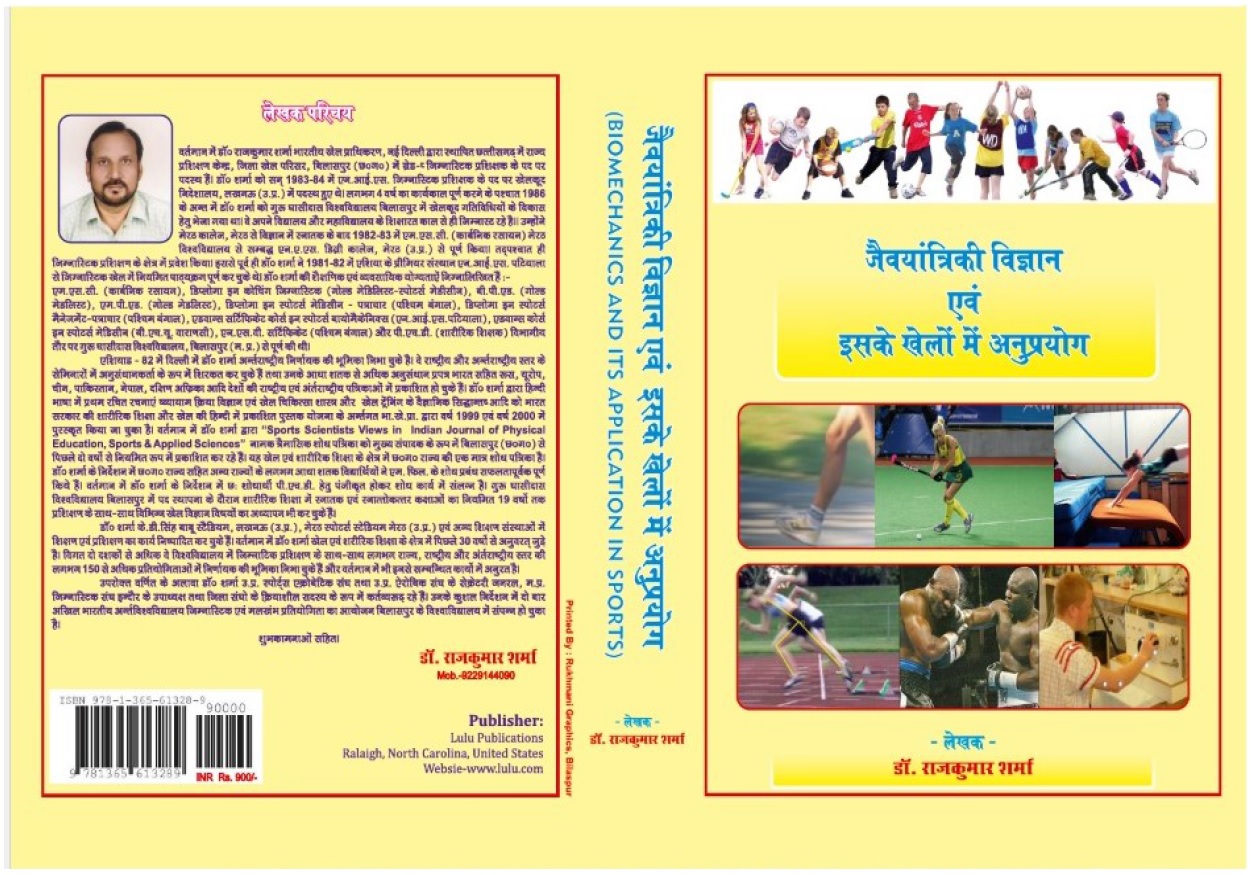| S.No. | Total View Count | Title of Manuscript | Page No | Download/ PDF |
|---|---|---|---|---|
| 1 | A COMPARATIVE STUDY OF PHYSICAL FITNESS COMPONENTS AMONG ATHLETES OF DIFFERENT TRACK AND FIELD EVENTS Author: Dr. Dharmendra S Narwaria1 & Dr. Ashish Kumar Nigam2 | 30-35 |  17 17 |
Article info
doi no.: 05-2016-44975451,
DOI Link :: http://doi-ds.org/doilink/02.2021-97895917/IJPESAS/2021/JAN/V11/I1/A6
AFFILIATIONS:
-
Sports officer, JNKVV, Jabalpur MP narwarialnupe@gmail.com Mobile- 9098605594,
-
Sports officer, JNKVV, Jabalpur MP, dr.aknigam@gmail.com, Mob. 9826348748
The purpose of the present study is to compare the physical fitness components among athletes of different Track and Field Events. For the purpose of this study, three groups were made namely Sprinters, Middle Distance and Long Distance Runners. A total of 45 subjects (15 in each group) were randomly selected from LNUPE, Gwalior, who have represented LNUPE, Gwalior at All-India Inter-University level. All the subjects were tested on the cinder track of LNUPE Gwalior. Investigators conducted the physical fitness test by use of AAHPER Physical Fitness Test which possess of 6 items (1) Pull-ups (2) Sit ups (3) 10 yard Shuttle run, (4) Standing broad pump (5) 50 yard dash and (6) 600 yard run/walk. These 6 items test the arm strength, abdomen muscles strength, agility, leg strength, speed and endurance of the athletes. Six stations were marked with required equipment. While conducting the test the investigator personally motivated the subjects. The obtained data was analyzed by applying One Way MANOVA (multi-variate analysis of variance). The MANOVA table was found significant for all the variables at level of significance 0.05.
Keyword: Physical Fitness, Athletes, Track and Field Events
References
Bushnell, T. & Hunter,I. (2007), Differences in technique between sprinters and distance runners at equal and maximal speeds. Sports Biomech. 6(3):261-8. doi: 10.1080/14763140701489728. PMID: 17933191
Carter, Cordelia W. and Micheli, Lyle J. (2011), Training the child athlete: physical fitness, health and injury, Division of Sports Medicine, Children's Hospital Boston, 319 Longwood Avenue, Boston, MA 02115, USA; michelilyle@aol.com
Koutedakis, Y. (1995), Seasonal variation in fitness parameters in competitive athletes. School of Health Sciences, Wolverhampton University, England., Sports Med., 19(6):373-92.
Little, N.G. (1991) Physical performance attributes of Junior and Senior women, Juvenile, Junior and Senior men judokas. J Sports Med Phys Fitness 31: 510–520.
Maruo, Y., Murphy, T. I., & Masaki, H. (2018), Long-Distance Runners and Sprinters Show Different Performance Monitoring - An Event-Related Potential Study. Frontiers in psychology, 9 : 653. https://doi.org/10.3389/fpsyg.2018.00653
Mujika, I., Goya, A., Ruiz, E., Grijalba, A., Santisteban, J., & Padilla, S. (2002), Physiological and performance responses to a 6-day taper in middle-distance runners: influence of training frequency. International journal of sports medicine, 23(5): 367–373. https://doi.org/10.1055/s-2002-33146
Sward, L. . (1992), The thoracolumbar spine in young elite athletes. Current concepts on the effects of physical training.” Department of Orthopaedics, Ostra Hospital, Gothenburg, Sweden. Sports Medicine (Auckland, N.Z.) 13(5):357-364.
Kaur, Surinder,Dolly and Kumar, Rajesh (2016), Assessment of Anthropometric and Physical Fitness components as predictors of performance of Athletes of 800m race. International Journal of Recent scientific Research, 7(4) : 10305-10308.
 admin@sportscientistsviews.com
admin@sportscientistsviews.com





